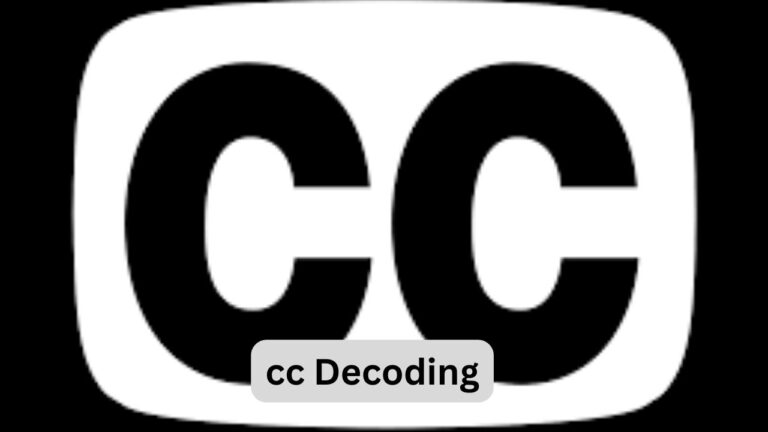Shemle Star DB vs Traditional Databases: What You Need to Know
Table of Contents
ToggleIntroduction to Shemle Star DB vs Traditional Databases
In today’s data-driven digital age, the tools you choose to store, retrieve, and manage information can either propel your business forward or drag it into the depths of inefficiency. The ongoing debate around Shemle Star DB vs Traditional Databases is more than just a technical discussion—it’s a pivotal decision that could impact scalability, agility, and innovation for years to come.
The buzz around next-gen database models like Shemle Star DB isn’t unfounded. Designed with performance and flexibility at its core, Shemle Star DB represents a shift from rigid schemas and monolithic structures toward more developer-friendly and cloud-optimized solutions.
So how does it really compare to the age-old relational and NoSQL systems that have powered everything from banking applications to global ERP systems? Let’s dive in.
What is Shemle Star DB?
Shemle Star DB is a next-generation distributed database designed for modern application needs, such as real-time analytics, IoT ecosystems, and AI-driven decision-making. It is built with a strong emphasis on schema flexibility, real-time replication, and horizontal scaling.
Key Features of Shemle Star DB
-
Dynamic Schema Evolution: No need for rigid pre-definition of fields.
-
Built-in Sharding: Native support for data partitioning and distribution.
-
Low Latency Reads/Writes: Optimized for real-time applications.
-
Integrated AI Hooks: Enables in-database machine learning capabilities.
-
Multi-model Storage: Supports document, key-value, and graph structures.
This flexibility makes Shemle Star DB a prime choice for startups and tech giants exploring cutting-edge digital products.
Traditional Databases: The Proven Workhorse
Traditional databases encompass both relational databases (RDBMS) like MySQL, Oracle, and PostgreSQL, and NoSQL systems like MongoDB and Cassandra. These systems have long served as the backbone of enterprise IT.
Types and Features
-
Relational DBs: Emphasize data normalization, ACID compliance, and structured query language (SQL).
-
NoSQL DBs: Offer better performance for unstructured data and enable horizontal scaling, but often sacrifice consistency.
Traditional databases are deeply embedded in financial systems, governmental infrastructure, and legacy enterprise software—making them difficult to replace but hard to scale or modify quickly.
Performance Benchmarks in Shemle Star DB vs Traditional Databases
Performance is often the deciding factor when choosing between Shemle Star DB vs Traditional Databases. The two systems approach this challenge very differently.
Shemle Star DB was built for speed. Leveraging real-time indexing, in-memory caching, and asynchronous I/O, it excels at low-latency, high-throughput workloads. Real-time analytics platforms, chat systems, and IoT sensors thrive in such an environment.
Conversely, traditional databases are optimized for transactional integrity and consistency. While they might not offer blazing speed, they can handle thousands of simultaneous financial transactions with accuracy. This makes them a reliable choice for systems that prioritize precision over speed.
Data Integrity and Consistency
Now, let’s talk about a critical factor—data integrity. Traditional databases were born in a world where ACID properties (Atomicity, Consistency, Isolation, Durability) ruled supreme. Banking systems and ERP software rely on these guarantees.
Shemle Star DB, by contrast, leans toward BASE principles (Basically Available, Soft state, Eventually consistent). This is particularly effective in distributed, cloud-based environments where high availability is more valuable than strict consistency.
Pros and Cons of Both Models
-
Shemle Star DB: Enables global availability and partitions well across regions. However, you may encounter slight data inconsistencies momentarily.
-
Traditional DBs: Provide rock-solid consistency, but often struggle with latency or downtime in distributed setups.
The right choice depends on your needs: do you value always-correct data, or always-available systems?
Ease of Use and Learning Curve
Here’s where the decision becomes personal—how easy is it to work with these systems?
Shemle Star DB prioritizes developer experience, offering intuitive APIs, rich documentation, and visual admin panels. It is particularly friendly to developers familiar with JSON, RESTful APIs, and modern JavaScript frameworks.
Traditional databases, on the other hand, often require knowledge of SQL, complex joins, stored procedures, and sometimes even vendor-specific query dialects. While this complexity can be powerful, it adds a steeper learning curve.
Learning Curve Comparison
| Factor | Shemle Star DB | Traditional DBs |
|---|---|---|
| Setup Time | Minutes | Hours to Days |
| Documentation | Beginner-friendly | Comprehensive but complex |
| Developer Tools | Modern and interactive | CLI-heavy, often older tools |
| Language Support | Polyglot (Node.js, Go, Python) | Strong SQL base, but limited modern tooling |
Shemle Star DB wins in accessibility, especially for startups and solo developers.
Scalability and Flexibility
Scalability can make or break a growing business. And when comparing Shemle Star DB vs Traditional Databases, the differences are glaring.
Traditional databases were designed in an era of vertical scaling—adding more CPU or RAM to a single server. While this works to a point, it becomes financially and technically limiting.
Shemle Star DB, however, shines in horizontal scaling. It allows you to distribute data across multiple nodes or data centers effortlessly. It’s cloud-native, meaning you can deploy it in Kubernetes clusters, auto-scale with demand, and integrate with CDNs and edge servers.
Flexibility also includes data model evolution. Shemle Star DB doesn’t force developers to go through painful schema migrations. You can add fields dynamically, support polymorphic data, or experiment with new formats—without downtime.
Security and Compliance
When it comes to security, both systems take different approaches—but both can be secure if configured correctly.
Shemle Star DB often comes with end-to-end encryption, multi-tenant isolation, and OAuth integration out-of-the-box. Designed for modern cloud compliance, it easily fits within frameworks like GDPR, CCPA, and HIPAA.
Traditional databases also offer encryption, role-based access control (RBAC), and auditing capabilities. However, many of these features are premium add-ons or require complex configuration.
Security Highlights
-
Shemle Star DB: Best for cloud-native security, real-time access control.
-
Traditional DBs: Best for enterprise-grade auditing, fine-grained access control.
Regardless of your choice, security should never be an afterthought.
Cost and Licensing Models
One of the less glamorous—but incredibly important—considerations is cost.
Traditional databases often operate under a licensing model. This means upfront fees, vendor lock-in, and sometimes expensive renewals. For large corporations, these costs might be acceptable, but they’re often deal-breakers for startups.
Shemle Star DB is typically open-source or freemium, with a pay-as-you-go cloud model. This flexibility is attractive to agile teams that need to iterate quickly and scale as needed.
But beware: while the entry cost is low, operational costs (e.g., cloud bandwidth, storage) can balloon if not monitored carefully.
Vendor Lock-in Risks
Vendor lock-in is a real and growing concern.
Traditional database providers like Oracle or Microsoft SQL Server often require proprietary tools, drivers, and management suites. Migrating away from them can be time-consuming and risky.
Shemle Star DB, in contrast, supports open standards, containerized deployments, and easy export/import tools. It’s built for a multi-cloud world, reducing long-term risk.
Use Cases for Shemle Star DB
Shemle Star DB is not just a theoretical marvel—it’s already being used in high-performance environments.
Startup ecosystems love its fast prototyping capabilities. IoT platforms rely on its high-speed writes and real-time querying. AI-powered apps use its embedded analytics engines to score leads or personalize content in milliseconds.
Real-World Applications
-
Live chat systems
-
Smart home automation
-
Recommendation engines
-
Stock price tickers
-
Blockchain data indexing
Use Cases for Traditional Databases
Despite all the innovation, traditional databases remain mission-critical in many areas.
Think banking, insurance, supply chain, and government operations—industries where data correctness is more valuable than speed. Legacy systems have decades of investment, making transitions expensive and unnecessary in many cases.
Common Applications
-
Payroll and HR systems
-
ERP software
-
Inventory management
-
Medical record keeping
-
Accounting platforms
Integration Capabilities
In today’s software ecosystems, no database exists in isolation. Integration capabilities can make or break your ability to scale rapidly.
Shemle Star DB offers a modern API-first design, making it easy to plug into various environments. It supports REST, GraphQL, WebSockets, and even real-time streams. Most importantly, it comes with native SDKs in popular programming languages and connectors for cloud-based services like AWS Lambda, Firebase, and Apache Kafka.
Traditional databases are highly integrable too, but they often rely on legacy ETL tools, ODBC drivers, and vendor-specific protocols. While these integrations are robust, they can also be bulky and harder to maintain in agile environments.
Integration Snapshot
-
Shemle Star DB: Ideal for cloud-native applications, microservices, serverless architecture.
-
Traditional DBs: Ideal for batch-processing pipelines and legacy enterprise systems.
If you’re building modern software, Shemle Star DB will get you to market faster.
Backup and Disaster Recovery
No system is complete without a robust backup and recovery strategy.
Shemle Star DB includes continuous backup features, automated failover systems, and real-time snapshots. Thanks to its distributed nature, data can be quickly restored across nodes—even in geographically separated data centers.
Traditional databases rely heavily on scheduled backups, often at daily or hourly intervals. Recovery might take longer, especially if you’re dealing with multi-terabyte datasets or rely on tapes and physical servers.
Key Differences
| Aspect | Shemle Star DB | Traditional DBs |
|---|---|---|
| Recovery Point Objective (RPO) | Seconds to minutes | Hours |
| Backup Automation | Built-in | Often manual or tool-based |
| Geo-replication | Native support | Requires configuration |
| Downtime During Restore | Minimal | Can be significant |
Shemle Star DB’s approach ensures business continuity with minimal operational effort.
Monitoring and Maintenance
The difference in operational visibility between Shemle Star DB and traditional systems is quite stark.
Shemle Star includes real-time dashboards, integrated logging, and smart alerts. These features are baked into most admin consoles and cloud panels, allowing devops teams to stay proactive.
Traditional databases do offer monitoring—but often through third-party tools like Oracle Enterprise Manager or Microsoft SQL Server Management Studio. These tools are powerful but can require more setup and specialized knowledge.
Shemle Star DB’s DevOps-friendly design minimizes friction, while traditional DBs require a more hands-on approach.
Community and Ecosystem
Let’s not overlook the power of community.
Shemle Star is growing rapidly and has an active community on GitHub, Discord, and Stack Overflow. Its open-source nature encourages third-party plugin development, integrations, and community-driven improvements.
Traditional databases like MySQL and PostgreSQL boast decades of community support. There are books, courses, forums, and massive developer networks that make troubleshooting and learning easier.
However, proprietary systems (e.g., Oracle, IBM DB2) often rely on paid support, limiting community involvement.
Deployment Options
Deployment flexibility matters, especially in hybrid and multi-cloud setups.
Shemle Star DB is container-native, meaning you can run it on Kubernetes, Docker Swarm, or virtually any CI/CD pipeline. It supports public cloud providers like AWS, GCP, Azure—and even works in edge computing environments.
Traditional databases are usually monolithic in structure, requiring careful configuration of storage, networking, and high availability. While cloud versions (like Amazon RDS or Azure SQL) exist, they may lack the agility modern teams need.
For agile teams and cloud-first projects, Shemle Star DB offers unmatched ease of deployment.
Documentation and Support
Documentation isn’t just a nicety—it’s your lifeline in production environments.
Shemle Star DB prides itself on having clear, API-centric documentation, complete with code examples, sandbox environments, and interactive tutorials. Support tiers range from community help to enterprise-level SLAs.
Traditional databases vary greatly. Open-source options like PostgreSQL have excellent documentation. But proprietary solutions often come with paywalled knowledge bases, and navigating them can be frustrating for smaller teams.
Migration Pathways
If you’re considering a switch, migration paths are vital.
Shemle Star DB provides migration wizards, auto-schema mapping, and import/export tools compatible with CSV, JSON, and SQL. Some platforms even offer automated scripts to convert relational data models into NoSQL structures.
Traditional systems often demand manual effort, particularly when moving to a new engine. This can be time-consuming, risky, and expensive.
Moving from traditional to Shemle Star DB is increasingly streamlined—but you’ll need to plan carefully.
Real-World Examples
To illustrate the real impact, consider these use cases:
Shemle Star DB in Action
-
A logistics startup used it to track delivery drones in real time with zero downtime.
-
A fintech company scaled to 1 million+ concurrent users in under a year using horizontal scaling and AI-driven fraud detection embedded in Shemle Star DB.
Traditional DBs Still Powering the World
-
Major banks process billions of secure transactions daily using Oracle and SQL Server.
-
Governments rely on relational systems to maintain birth, tax, and property records dating back decades.
Both systems shine—depending on the problem you’re solving.
Expert Opinions
“Modern databases like Shemle Star DB offer the scalability and agility needed for today’s dynamic workloads,” says Dr. Karen Stokes, a database researcher at Stanford.
On the flip side, Martin Keller, CTO of a Fortune 500 firm, warns: “Relational databases are not going away anytime soon. Their robustness and compliance features are unmatched in certain industries.”
Future Trends in Database Technology
Databases are evolving toward AI-enhanced, serverless, and self-healing architectures.
Expect Shemle Star DB to embrace predictive indexing, query optimization via machine learning, and edge computing capabilities.
Meanwhile, traditional systems are modernizing through cloud-native wrappers, AI ops, and hybrid storage models to stay relevant.
Conclusion
The comparison of Shemle Star DB vs Traditional Databases isn’t a zero-sum game. It’s about context, requirements, and future readiness.
Shemle Star DB represents a bold leap into the future—perfect for startups, agile teams, and modern use cases. Traditional databases offer time-tested stability and consistency, best suited for regulated industries and mission-critical applications.
FAQs
What is Shemle Star used for?
Shemle Star is ideal for real-time, high-volume applications like IoT, analytics dashboards, AI apps, and more.
Is Shemle Star better than PostgreSQL?
It depends. For flexible schemas and cloud-native features, yes. For complex joins and enterprise support, PostgreSQL still leads.
Can Shemle Star replace SQL databases?
In many cases, yes. But not where strict consistency and legacy integration are essential.
Is Shemle Star open-source?
Yes, most implementations follow a freemium model with open-source cores and paid enterprise features.
How scalable is Shemle Star?
Highly scalable. It’s designed to horizontally scale with minimal downtime.
Is there a learning curve?
Moderate. It’s simpler than most traditional but still requires understanding of distributed systems.







